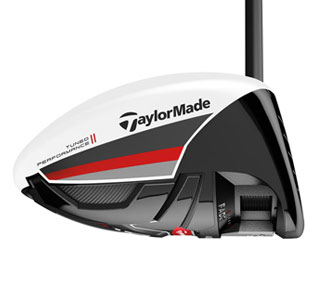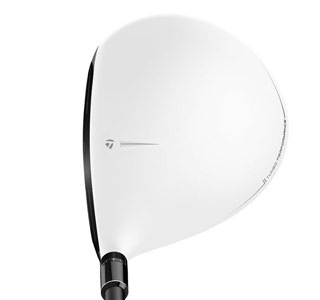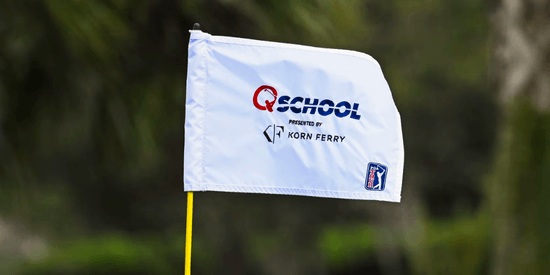TaylorMade R15 Driver - The AmateurGolf.com Review
6/14/2015 | by Rusty Cage
see also: Equipment Reviews

Billed as the company's most technologically advanced driver, the TaylorMade R15 is designed to reduce spin and produce exceptional distance on your tee shots.
It’s not about white crowns versus black crowns. Or about 15 years of research and development - although that’s a good story. It’s definitely not about father and son bonding between Sergio Garcia and his dad, although I’ll admit it makes for a great commercial. And forget about lofting up. It’s still crucial, but the slogan is so 2014.
With the R15 driver, TaylorMade rolls out a new and improved driver that benefits from a low and forward center of gravity design. Like the SLDR that came before it, the company’s latest marquee driver is best suited for players who need to reduce spin on their drives to max out their distance. As was the case with the SLDR, you’ll need to consider adding more loft to help offset the low-spin characteristics of the head design.
The R15 driver comes in two sizes - 460 and 430 cubic centimeters. There’s also TP versions of the same heads if you’re feeling saucy. Most amateur players, save for the most accomplished sticks, will play the less demanding 460cc version. All models in the R15 driver line up are engineered to crank out some seriously long drives at the expense of some forgiveness. You may have heard stories, like I have in conversations with several fitters, that the SLDR was particularly brutal on mishits. I didn’t expect to have a whole lot of success trying out the R15 but I was pleasantly surprised. The level of forgiveness exceeds the SLDR, but let’s not get carried away - it doesn’t have the near “auto-correct” capabilities of the Ping G30.
TaylorMade engineers made some notable adjustments to the design of the R15 when compared to it’s predecessor. The Front-Track System near the front of the sole has two sliding weights instead of one. Each weight is 12.5 grams compared to the SLDR’s single 20- gram weight, allowing golfers to incrementally adjust the level of forgiveness and and directional bias on the fly. If you and a qualified fitter decide that the R15 is the right driver for your game, those weights can be shifted around to fine tune your ball flight, but they won’t drastically alter the basic design of the club and its performance characteristics.
The track that the weights are attached to has also changed. TaylorMade flattened the curvature to help lower the center of gravity of the head, even when the weights are split out to improve ball speeds on mishits. As for the head itself, it’s lighter than the SLDR by 4 grams which should allow players to swing the R15 a little faster. The R15 also has a 4-degree Loft Sleeve which lets you modify the club’s loft, lie and face angle.
Performance:
I tested a 10.5 degree R15 driver with a stock Fujikura Speeder 57 Evolution shaft (S Flex). A Foresight GC2 launch monitor was used to record my ball flight numbers.

|
TaylorMade's R15 Front Track
System acts like a speed pocket |
Before stepping into the hitting bay, I took out my torque wrench and adjusted both weights on the R15 to the neutral (nitro?) position. I’m sure some golfers play the R15 with the weights split out to the sides, but I haven’t seen any. Besides, configuring this driver for “maximum forgiveness” kind of defeats the purpose, doesn’t it? It’s like buying a Porsche for its trunk space.
To no one’s surprise the R15 is a great performer when you hit it on the screws and clearly lives up to it’s billing as a low spinning driver. I consistently saw spin numbers below the 2500 rpm threshold. In terms of direction, I got exactly what I expected - a slight draw with a ton of roll out. While I didn’t hit any worm burners, the trajectory of most of my shots were way too low. Some of that is a consequence of the super-low spin design and can be remedied by adding loft with a simple turn of the wrench.
That being said, I’m not what TaylorMade would call a poster boy for the R15. As a golfer who doesn’t impart a lot of spin on their ball to begin with, I actually need a club that will help my drives maintain some hang time. Launch angle and peak height were the telling stats during testing. With my gamer, I typically produce a launch of 13 to 14 degrees with an average peak height of about 35 yards. Swinging the R15, I was only able to generate a launch angle of 9.1 degrees and a peak height of 21 yards. Ouch.
What my shortcomings reveal is that the R15 gets the ball out there even with less-than- optimal launch conditions. In the right hands, this driver has the potential to produce some crazy long drives.
| R15 driver | |
| Club Head Speed | 95 mph |
| Ball Speed | 138.9 mph |
| Launch Angle | 9.1 degrees |
| Total Spin | 2312 RPM |
| Carry Distance | 229.38 yards |
| Total Distance | 262.47 yards |
| Peak Height | 21.37 yards |
Look and Feel:
The R15 is a big and brawny club. While it’s not as heavy as something like Nike’s Covert 2.0 Tour, it won’t be mistaken for TaylorMade’s lighter Aeroburner either. On top of that, I really don’t like the white paint job on the crown which only heightens the perception the club is larger than it’s 460cc footprint. I suppose there’s a faction of golfers who actually prefer that look, but for those who don’t, TaylorMade offers the R15 with a black crown that actually ties in better with the stock shaft.
From a design perspective, the R15 has a slight edge over the SLDR. The crown graphics are more refined and the shape has a longer front-to-back profile. The company has added an alignment aid this time around that plays up the “need-for-speed” vibe without looking tacky.
 |
The white
crown on the R15 features minimal
branding and a simple, but effective alignment aid |
At impact, the R15 doesn’t have that lively sensation I’m accustomed to getting from my own driver when you smash it on the sweet spot, but the combination of the head and stock shaft feels very stable. Golfers with fast tempos can free-wheel it and still feel a sense of control.
Takeaway:
The R15 driver is the end result of what TaylorMade has learned about low and forward CG, sliding weights, adjustability and speed pockets in the form of the Front Track System. It’s packed with technology, and most of it is fixated on maximizing the length of your best drives. As a consequence of that philosophy, some golfers will struggle with this driver and no amount of lofting up is going to change the fact that the R15 isn’t designed for them. On the other hand, if you’re the kind of player who can benefit from a super low-spinning driver in your bag, the R15 might help you blow away your distance goals by a large margin.
Most Popular Articles

2025 PGA TOUR Q-School Guide: Sites, Scores, and Who Advanced
Dec 5, 2025Second Stage is complete and Final Stage awaits at Sawgrass — follow every Q-School leaderboard and the players still chasing
2025 LPGA TOUR Q-Series: Final Qualifying Stage FINAL SCORING
Dec 8, 2025Helen Briem earns medalist honors, 31 players headed to the LPGA next year
2025 PGA TOUR Q-School Final Stage: Ewart Leads Five New TOUR Card Winners
Dec 14, 2025A.J. Ewart topped Final Stage at TPC Sawgrass, leading five players who secured PGA TOUR membership for 2026.
Australian Open at Royal Melbourne: Preview, amateur bios, and how to watch
Nov 30, 2025Rory McIlroy headlines one of the championship's top fields in years - at least four amateurs will have their chance at gloryInside Gil Hanse’s Restoration of Baltusrol’s Upper Course: A Return to Tillinghast’s
Dec 11, 2025Renowned architect Gil Hanse reveals how he brought Baltusrol’s Upper Course back to life by honoring A.W. Tillinghast’s originalLoading latest news...
